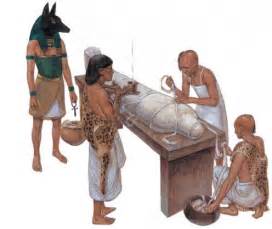Week 4: Medcine+Technology+Art

The intersection between art and medicine has been something that has existed since the existence of early civilizations—such as the Greeks or the Egyptians. In her lectures, Professor Vesna explains the progressions of this intersection and how it has helped develop the medical field by adding technological advancements to it in addition to contributing to the arts community. From the Greeks and their dissections of the human body to the mummification practices of the early Egyptians and their preservation of organs from the corpse, these methods have jumpstarted inspirations for early artists in regards to the topic of human anatomy. Egyptian Mummification Process The more modern projects of today reflect this intersection as well. For example, the Visible Human Project features a display of slivers of human cadavers, both male and female, for the public to observe. Exhibit in the Visible Human Project One of the more interesting topics regarding the human body is ...

